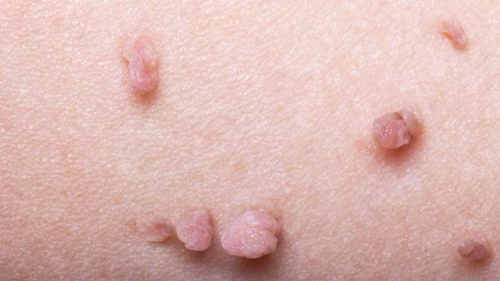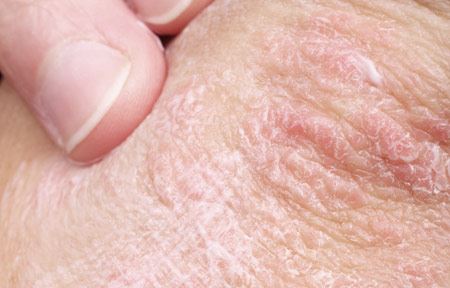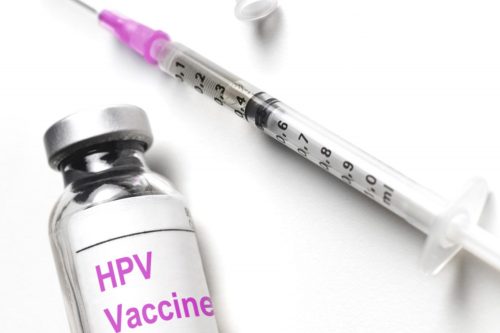admin
Latest posts by admin (see all)
- Wart Cream: Which One to Choose? - October 14, 2019
- Wart Freeze: How Does the Cryodestruction Take Place? - October 11, 2019
- How to Use Salicylic Acid for Warts Removal? - October 8, 2019
Anal warts are just one of the manifestations of the very common in our days HPV (human papilloma virus). In this case, the disease manifests itself in the form of dry outgrowths or genital warts, centered around the anus and on the adjacent area of the rectum. Often such neoplasms merge with each other, forming conglomerates, in exceptional cases completely overlapping the anus and hampering the process of defecation. Typically, this happens if, in addition to HPV, the infected person suffers from diabetes mellitus or the immunodeficiency virus.
Contents
What Kind of Warts Can Be in the Anus?
Depending on its appearance, manifestations of HPV in the form of anal warts can be divided into several large groups. Their classification will look like this:
- Peaked condylomas. These formations have the appearance of elongated “papillae.” When concentrating several warts in one place, outwardly resemble a cock’s comb.
- Such formations are characterized by small dimensions and the absence of “finger-like” (in other words, elongated) elements. In a small amount, often, almost invisible over the skin. Ordinary warts. As a rule, these new formations look like flat spots and are distinguished by a wide variety of shapes, colors and sizes.
- Condoms of Buschke-Lowenstein. These warts are quite rare. They are distinguished from ordinary condylomas by unusually large, almost gigantic sizes.
- Bowen’s disease. With this diagnosis, tumors affect the entire area of the mucous membrane in the region of the anus. The second name for this disease is intraepithelial neoplasia.
 Despite the fact that HPV (especially the 16th and 18th types) often provokes the development of malignant tumors and other serious diseases, the appearance of anal warts by itself is not a cause for alarm.
Despite the fact that HPV (especially the 16th and 18th types) often provokes the development of malignant tumors and other serious diseases, the appearance of anal warts by itself is not a cause for alarm.
Important: Usually, such reactions are caused by the ingestion of subspecies of the virus under the numbers 6 or 11, each of which is known for its low oncogenic activity.
The Ways You Can Be Infected
In rare cases, HPV is transmitted from mother to child. The most common way to infect HPV in general and anal warts in particular is sexual intercourse. Especially, the probability of catching a virus is significant, engaged in unprotected anal sex (perhaps, that’s why patients with this diagnosis are so often found among homosexuals). As a rule, infection occurs as a result of microtraumas of papillomas and subsequent weak bleeding, which is almost inevitable in the process of intimacy with the carrier of the disease.
Once in the body, the virus at first is in a “sleeping” state and is not characterized by any external manifestations. That is why it is often impossible to diagnose HPV at an early stage of the disease. It should, however, be borne in mind that if one of the partners suffers from anal warts in a monogamous relationship, the other, most likely, is the owner of a similar diagnosis. In some cases, HPV can also be transmitted from mother to child (usually this happens directly, during the passage of the baby’s birth canal). With this model of infection, the virus behaves unpredictably, not necessarily manifesting as anal warts.
In particular, among infants whose mothers have been infected, cases of laryngeal papillomatosis are very common. Is it possible to avoid the transmission of HPV “inherited”? In some cases, in order to prevent the infection of the child, doctors decide to deliver by caesarean section. However, usually this practice is applied to those only pregnant women, whose disease with anal warts markedly progressed during the period of gestation. Unfortunately, the extreme measure described above is not a panacea that protects the child against the risk of contracting anal warts or other types of HPV.
According to statistics, most cases of infection of infants are due to the fact that care for them was carried out by the carrier of the disease. At the same time, the most common cause of HPV in older children are, as it is scary, sexual harassment from adults.
Important: Burning in the region of the anus is a symptom of the appearance of anal warts.
Symptoms of Anal Warts
Although many infected HPVs are asymptomatic, doctors have long known the full list of “classical” manifestations of the disease. In addition to anal warts, carriers of the papilloma virus often voice the following complaints:
- itching and burning in the anus;
- hyperemia;
- cracks and suppuration in the anus;
- uncharacteristic pain that occurs during anal sex.
Important: Some side effects of the virus may also appear. So, for example, warts build up, infected, start to produce an unpleasant smell and provoke education in the anus of fistulas, triggering the process of intoxication of the whole organism.
How Are Anal Warts Diagnosed?
If a symptom of HPV is found, you need to contact the proctologist. Confirm or deny the diagnosis of “anal warts” can be a specialist specializing in this problem doctor. Therefore, if you find any symptoms of a particular type of HPV, any health conscious citizen who is caring about his health must make an appointment with the proctologist and dermatovenerologist. In the event that the warts are localized not only in the area of the anal opening, but also on the external genitalia, it will not be superfluous also to visit the gynecologist (for women) or the urologist (for men).
If you suspect a HPV in a small child, in any case, first write to the pediatrician. How is the diagnostic procedure performed? Today, a patient’s examination for anal warts occurs in several stages:
- A detailed visual examination of the anus with an anoscope.

- Blood sampling for analysis to determine the specific type of virus that affected the patient.
- Histological examination designed to exclude (or confirm) the likelihood of oncology.
- A surveillance smear, which often reveals HPV-associated sexually transmitted diseases.
Important: Separately, a study is being conducted to identify clear boundaries for the spread of skin rashes. To do this, the anus is treated with a weak solution of acetic acid. The affected skin warts significantly lighter, which makes it convenient to have a subsequent biopsy (which, in any case, is supposed to be done before removing the papillomas).
How to Treat Anal Warts Effectively?
Complex treatment of anal warts includes two main aspects: fighting with the virus, which became the root cause of the disease and getting rid of the growths that interfere with the normal life of the growths on the skin. Today, there are a huge number of ways to safely remove papillomas. Here are just a few:
- Laser therapy. The essence of the method lies in the point thermal effect on the affected areas of the skin, which entails “evaporation” of warts.

- Electrocoagulation. In this case, the destruction of the cells of the wart and the formation in its place of the scab is due to exposure to electric current. This procedure is rather painful and, therefore, is carried out exclusively under local anesthesia.
- Excision with a radio wave knife. In the process of this operation, the papilloma is cut with the help of special equipment, and the remaining wound in its place is instantly painlessly cauterized. According to this technology, affected areas of the skin are flooded with liquid nitrogen, which leads to the withering away of warts.
- Treatment with chemical preparations. The essence of the operation is to burn (up to necrosis) areas of the affected warts skin with the help of funds based on triacetate.
In order to make the treatment of anal warts as successful as possible, doctors often ask their patients to follow some simple recommendations.
Important: In order not to provoke a relapse of the disease, it is necessary: to completely give up smoking and alcohol; to eat properly and balanced; to live an active lifestyle; see the appropriate specialists (proctologist, dermatovenereologist and gynecologist or urologist) on the regular basis.
Tips on How to Prevent the Appearance of Anal Warts
It is important to understand that there is no 100% guarantee of avoiding HPV infection (and, in particular, anal warts). However, some measures can help to minimize this risk. Doctors give the following recommendations in this regard:
- It is important to undergo regular medical examinations on a regular basis, including a survey from a proctologist, dermatovenerologist, and also a gynecologist or urologist.
- Timely vaccination against HPV helps reduce the risk of contracting the disease several times.
- During each sexual act (especially – not with a regular sexual partner), condoms should be used.
 Don’t let anal warts prevent you from leading the normal life-get rid of them using one of the useful methods if you have them and do your best not to have them in the future!
Don’t let anal warts prevent you from leading the normal life-get rid of them using one of the useful methods if you have them and do your best not to have them in the future!